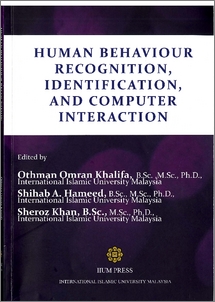Htike, Kyaw Kyaw and Khalifa, Othman Omran and Lai, Weng Kin
(2011)
Human posture recognition : methodology and implementation.
In:
Human Behaviour Recognition, Identification and Computer Interaction.
IIUM Press, Kuala Lumpur, pp. 32-38.
ISBN 978-967-418-156-7
![[img]](http://irep.iium.edu.my/style/images/fileicons/application_pdf.png)  Preview |
|
PDF (Human posture recognition: Methodology and implementation)
- Published Version
Download (440kB)
| Preview
|
Abstract
Human Posture Recognition is a key component of many application-oriented computer vision systems, for instance in automated visual surveillance, automotive safety,
computer interaction and multimedia processing. Human tracking is an important part at 3 automated video surveillance system. It is used to track any previously detected human to the mapping or prediction purpose or simply for behavioural analysis. High detection r
and low false alarm rates are essential for achieving robustness in higher level vision tas such as tracking or activity recognition
Actions (login required)
 |
View Item |


 Download Statistics
Download Statistics Download Statistics
Download Statistics